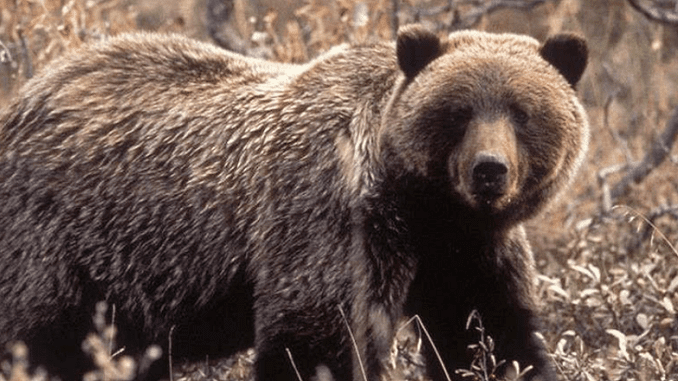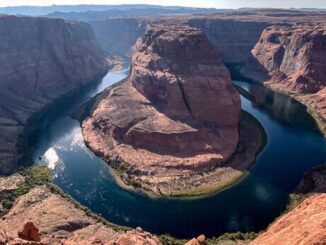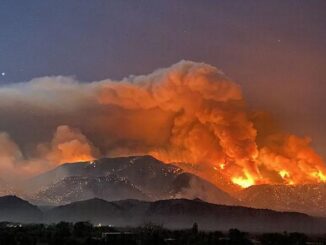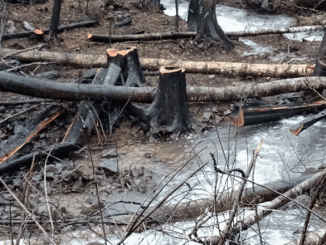
WASHINGTON, DC, July 13, 2022 (ENS) – Secretary of the Interior Deb Haaland today announced the establishment of the Lost Trail Conservation Area in northwest Montana as the 568th and newest unit of the National Wildlife Refuge System, managed by the U.S. Fish and Wildlife Service.
Overlaying existing private lands, the Conservation Area will protect crucial wildlife habitats and migration corridors for elk, mule deer, grizzly bear, wolverine, and Canada lynx, between Glacier National Park, the Cabinet Mountains Wilderness, the Selkirk Mountains and into the Coeur d’Alene Mountains in Idaho.
This expansion – the first unit for the Refuge System under Secretary Haaland’s leadership – is the culmination of a 20-year locally-led effort to conserve important big game corridors and recreational areas in the region. It is considered a model for the Biden-Harris administration’s ongoing efforts to conserve and restore our nation’s lands and waters.
“The Lost Trail Conservation Area will help guarantee that future generations have access to the same woods and waters as we enjoy today for hunting, fishing, hiking and wildlife viewing,” said Secretary Haaland.
“National wildlife refuges are one of the most important ways that we can connect all Americans to public lands with little to no entry fees. I am grateful to the U.S. Fish and Wildlife Service and its partners for the locally led collaboration that led to this important milestone,” she said.
The Service worked in partnership with the Trust for Public Land and the Confederated Salish and Kootenai Tribes to purchase the 38,052-acre conservation easement from continuing owner Southern Pine Plantations Montana, owner of lands formerly owned by timber giant Weyerhaeuser.
Conservation areas are national wildlife refuges that consist primarily or entirely of conservation easements on private lands.
The Lost Trail Conservation Area is unique in that it includes private timberland that has historically been open to the public on a voluntary basis, and the transition to a national wildlife refuge ensures that public recreational access is maintained in perpetuity.
The Lost Trail Conservation Area will allow sustainable commercial timber harvests and provide wildlife-dependent recreational opportunities such as hunting, fishing, hiking and wildlife viewing.
“The Service is grateful for incredible partnerships with the Trust for Public Land and the Confederated Salish and Kootenai Tribes,” said Fish & Wildlife Service Director Martha Williams. “Locally-led conservation efforts such as this provide a lasting impact on our efforts to protect crucial wildlife habitat for threatened, endangered and priority species while prioritizing recreational access.”
The newly acquired Conservation Area was funded by the Great American Outdoors Act and Land and Water Conservation Fund, LWCF. Since it began work in 1965, the Fund has covered $4 billion worth costs for projects in every county in the country. At no cost to taxpayers, the LWCF supports increased public access to and protection of federal public lands and waters – including national parks, forests, wildlife refuges, and recreation areas. The Fund provides matching grants to state and tribal governments for the acquisition and development of public parks and other outdoor recreation sites.
To provide the public a chance to engage in this planning process, a draft environmental assessment and land protection plan were made available for public review period in 2020. In early 2021, the Service released the final environmental assessment and land protection plan to authorize easement purchases from willing sellers within the Lost Trail Conservation Area.
In developing the plan, the Service consulted with the Confederated Salish and Kootenai Tribes on prioritizing important wildlife habitat and its connection to their conserved lands, as well as with the state of Montana to connect landscape-level conservation efforts.
Permanent easements on up to 100,000-acres may be added within the project boundary, Haaland’s office said in a statement.
The Refuge System is a network of 568 national wildlife refuges and 38 wetland management districts. There is a national wildlife refuge within an hour’s drive of most major metropolitan areas – hosting some 65 million visits every year – almost all offering free admittance year-round. National wildlife refuges provide vital habitat for thousands of species and access to world-class recreation, from fishing, hunting and boating to nature watching, photography, and environmental education.
Featured image: Montana grizzly bear (Photo courtesy Montana Department of Fish, Wildlife and Parks)



